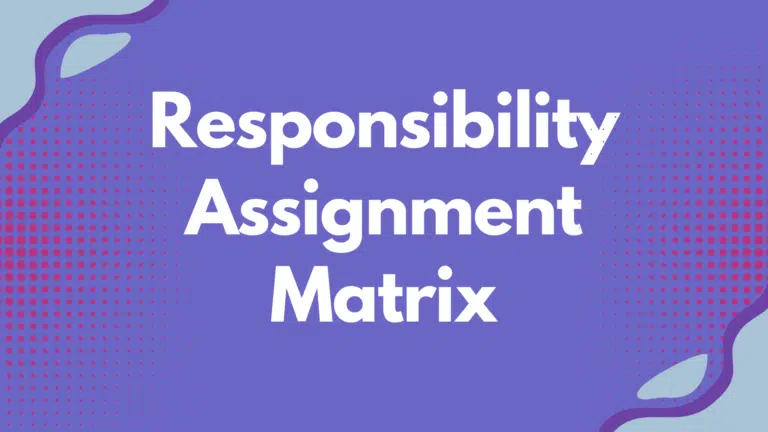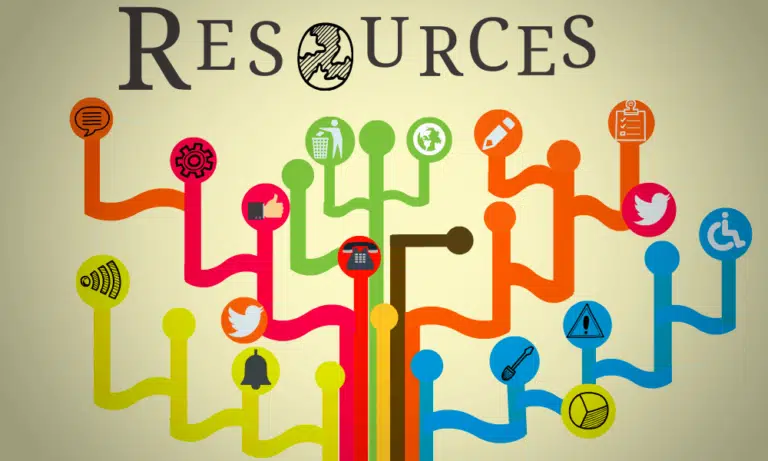Team meetings are mostly boring—unless the host is charismatic and knowledgeable. I have attended many meetings and often wanted to leave them because they lacked fun and interactivity.
Presenters can use their creative thinking to add fun and excitement to team meetings to increase engagement and effectiveness.
In today’s blog post, I will share nine engaging, fun games you can play during your team meetings at work to increase the meeting’s effectiveness.
Let’s get started.
Top 9 Games for Team Meetings
The following are the top 9 icebreaker games you can use for team meetings:
- Two Truths and a Lie
- Pictionary
- Escape-Room Challenge
- Team Trivia
- Story Cubes
- In-Person Scavenger Hunt
- Virtual Scavenger Hunt
- Icebreaker Bingo
- Team Charades
#1. Two Truths and a Lie
This is our first team meeting game.
Two Truths and a Lie is a popular, fun icebreaker game that helps colleagues to know each other at the workplace and create a bond. The game is simple and fun; you will share three statements about yourself—two true and one false. The audience has to identify the false statement.
Follow these steps to play this game:
- Gather Participants: Gather your audience. This game is often played in small groups but can be adapted for larger gatherings.
- Explain the Rules and Show Examples: Explain the rules to all employees or participants. Let them know that each person will take turns sharing three statements about themselves; two will be true, and one will be false. Afterward, use an example to illustrate how the game works. It is best if you are the first person to share the statements. Share three statements about yourself; two of them must be true, and one must be false. For instance:
- I have traveled to five different countries.
- I can play the guitar.
- I once climbed Mount Everest.
- Take Turns and Guess: Begin the game by asking a participant to share three creative, interesting statements. After this participant shares their statements, pause for others to discuss and guess which statement is the lie. This can lead to interesting conversations and insights into each other’s lives.
- Reveal the Lie and Rotate Turns: Ask the person who shared the statements to reveal the lie after the discussion. Continue the game by rotating turns to different participants. Encourage participants to be creative with their statements, making it challenging for others to identify the lie. As the game progresses, participants will learn more about each other and may be surprised by the shared truths and lies. It’s a lighthearted way to break the ice and foster a sense of camaraderie.
#2. Pictionary
Pictionary is a classic party game that combines drawing and guessing. It is a fun and creative way to engage a group of people and can be played by players of all ages. The game involves players drawing a word or phrase on paper while their teammates try to guess what it is within a certain time limit.
Follow these steps to play this game:
- Gather Materials and Form Teams: Ensure that you have all the materials (e.g., a pad of paper or a drawing board, markers or pens, and a timer). You will also need a list of words or phrases for players to draw. Divide the players into two teams. Each team should have an equal number of players.
- Prepare Word Cards and Set Up the Drawing Area: Prepare a set of word or phrase cards before starting the game. You can create your list, use pre-made Pictionary cards, or use word-generator apps. Designate a drawing area (e.g., a whiteboard, a large pad of paper on an easel, or individual drawing boards for each team).
- Choose a Starting Team and Start the Timer: Decide which team will go first. You can do this by flipping a coin, drawing straws, or any other fair method. Choose a time limit for each round (e.g., 1-2 minutes). One player from the starting team will randomly select a word or phrase and then start the timer.
- Draw the Word or Phrase and Guess: The player who is drawing will start to draw their selected word or phrase in the designated drawing area. They cannot use letters or verbal cues. While the player draws, their teammates will try to guess the word or phrase. The player who is drawing can’t speak or use gestures, and their teammates must rely solely on their drawing.
- Correctly Guess or Pass and Rotate Turns: The team earns points if their teammates correctly guess the word or phrase within the time limit. If not, their turn ends, and the play passes to the other team. Continue taking turns between the two teams. Rotate the player who draws after each turn. Keep track of the points for each team. You can use a simple scoring system (e.g., one point per correct guess). Decide on the number of rounds you want to play or set a time limit for the game. The team with the most correct answers wins.
#3. Escape-Room Challenge
The Escape-Room Challenge is a popular real-life or virtual game in which players work together to solve a series of puzzles and challenges to escape from a themed room within a set time limit. While there are physical escape rooms you can visit, virtual versions are available online to play from the comfort of your home.
Follow these steps to play this game:
- Select an Escape Room and Form Teams: Choose a physical escape room location to visit or find an online platform that offers virtual escape-room experiences. Many websites and apps provide a variety of escape-room scenarios. Once you have selected an escape room, divide the participants into teams. Teams can be small or large, depending on the number of players and the complexity of the escape room.
- Choose a Theme and Set a Time Limit: Select an escape-room theme that suits the group’s interests and preferences. Themes can range from mystery to adventure, horror, or fantasy. Decide on a time limit for the escape-room challenge. Common time limits are around 60 minutes, depending on the escape room.
- Understand the Rules and Enter the Room: Ensure everyone understands the escape-room rules before starting. Rules may vary between physical and virtual escape rooms, so reviewing them beforehand is essential. If you are playing in a physical escape room, enter the room and familiarize yourself with the environment. Note whether there are any clues, puzzles, or objects that are relevant to your escape.
- Start Solving Puzzles: Start solving the escape room’s puzzles and challenges. Puzzles can include riddles, logic problems, codes, and more. Work as a team to uncover clues and find solutions. Communication is key in an escape-room challenge. Constantly share information, discuss findings, and update each other on your progress. Teamwork is crucial for success.
- Use Hints and Solve the Final Puzzle: Most escape rooms provide hints or clues if you get stuck on a particular puzzle. Use hints wisely to keep the game flowing and avoid getting stuck too long. As you progress, you’ll encounter a final puzzle leading to your escape. Work together to solve this puzzle before the time runs out. You will escape the room if you successfully solve all the puzzles and challenges within the time limit. Celebrate your victory as a team.
#4. Team Trivia
Team Trivia is a quiz-style game where participants, organized into teams, answer various questions on various topics. The goal is accumulating the most points by correctly answering questions from different categories. It’s a great way to test general knowledge, promote friendly competition, and encourage team collaboration.
Follow these steps to play this game:
- Organize Teams and Select a Trivia Host: Divide the participants into teams. Teams should be of equal size, and it’s often a good idea to mix individuals with varying areas of expertise. Choose a trivia host who will be responsible for asking questions, keeping score, and managing the game’s flow.
- Create Trivia Questions and Determine Point Values: Prepare trivia questions from various categories. These categories can include general knowledge, history, science, pop culture, sports, and more. The number of questions and categories will depend on the time you have and the participants’ preferences. Assign point values to each question based on their difficulty. For example, you might have simple questions worth 1 point, moderate questions worth 2 points, and challenging questions worth 3 points.
- Explain the Rules and Ask Questions: Briefly explain the game’s rules to all participants. Clarify how the scoring system works, how questions will be presented, any specific rules for answering questions, and time limits. The trivia host will ask the questions one at a time, then allow each team a designated amount of time to confer and submit their answer. The host can read the question aloud and/or display it visually.
- Answer Submission and Review: Each team must submit their answer after the allotted time is up. This can be done on paper (i.e., if playing in person) or through a digital platform (i.e., if playing remotely). The trivia host will review the answers and award points based on the number of correct answers. The host can also decide if there are any ambiguities or disputes.
- Keep Score and Rotate Turns: Maintain a running score for each team as the game progresses. Display the scores after each round to keep participants informed and motivated. Continue asking questions and rotating between teams until you have completed the predetermined number of rounds or exhausted your set of questions. At the end of the game, tally the points and declare the winning team. You can offer a small prize or simply celebrate the achievement.
#5. Story Cubes
Story Cubes is a creative storytelling game that uses a set of dice with images on each face. The goal is to inspire and enhance storytelling by rolling the dice and incorporating the images that appear into a cohesive narrative. The game encourages creativity, imagination, and collaboration.
Follow these steps to play this game:
- Acquire Story Cubes and Gather Participants: Get a set of Story Cubes. These are typically six-sided dice with different images on each face. Various editions and themes are available, but the core idea is the same. Now, assemble a group of players. Story Cubes can be played individually or in a group. The more players, the more diverse and interesting the stories can become.
- Explain the Concept and Understand the Symbols: Briefly explain the concept of Story Cubes to the participants. Let them know that the game involves creating a story using images on the rolled dice. Familiarize the players with the symbols on each die. Depending on the Story Cubes edition, symbols can include objects, people, actions, and more. Each symbol sparks creativity and contributes to the unfolding narrative.
- Roll the Dice and Create a Story: Start the game with the first player to roll a set number of Story Cubes (typically 3-9 dice). The rolled images become the starting point for the story. Using the rolled images, the player weaves a story incorporating the symbols. The story can be as short or long as desired, and players are encouraged to let their imagination run wild.
- Pass the Cubes and Build on the Previous Narrative: After a player has finished their part of the story, they can pass the Story Cubes to the next player. The next player then adds to the existing story using the new set of rolled images. As the game progresses, players continue to build on the narrative created by their predecessors. The challenge is to make the story coherent and engaging while incorporating the randomly generated images.
- Continue Each Round and Conclude the Story: Repeat the process for several rounds, with each player adding their unique twist to the story. The dice’s unpredictability will add an element of surprise and creativity to the storytelling process. Decide on a predetermined number of rounds or a natural conclusion point for the storytelling session. The last part of the story can be a collaborative masterpiece, which reflects all players’ contributions. After completing the game, players can share and reflect on the stories they created. This can lead to discussions about creativity, teamwork, and each participant’s perspectives of the game.
#6. In-Person Scavenger Hunt
An In-Person scavenger hunt is a game in which team members search for a list of items or solve a series of clues. It is a fun and engaging activity that can be adapted for various occasions (e.g., parties, team-building events, or family gatherings).
Scavenger hunt is a popular and great icebreaker.
Follow these steps to play this game:
- Define the Theme and Create a List of Items: Determine the purpose of the scavenger hunt and choose a theme if desired. Themes (e.g., birthday party, nature hunts, or mystery adventures) can add excitement and creativity to the game. Create a list of items or clues for participants to find, based on the theme and purpose. For item-based hunts, list specific objects that must be collected. For clue-based hunts, create a series of riddles or puzzles that will lead to the next location or item.
- Determine the Playing Area and Teams: Decide boundaries or playing areas for the scavenger hunt. This could be a specific location (e.g., a house, backyard, park, or even an entire neighborhood), depending on the size of the group and the available space. If you have a larger group, then divide participants into teams. Consider the group’s size and dynamics to determine the number of teams.
- Explain the Rules and Show the List: Briefly explain the scavenger hunt rules to all participants. Clarify any safety guidelines and summarize how the game will unfold (e.g., whether teams will compete against each other or work collaboratively). Provide each team or participant with a copy of the scavenger hunt list or clues. If you have physical items to find, ensure that each team has a bag or container to collect them.
- Set a Time Limit and Start the Hunt: Establish a time limit for the scavenger hunt. The duration will depend on the hunt’s complexity and the participants’ age. Common time limits range from 30-60 minutes. Begin the scavenger hunt and allow teams to explore the playing area to find the listed items or solve the provided clues.
- Monitor the Teams and End the Hunt: Monitor the teams as the scavenger hunt progresses to ensure fair play and safety. Be ready to provide help or clarification—especially for challenging clues. Once the time limit is reached, announce the end of the scavenger hunt. Gather all participants and review the items collected or the clues solved. If the scavenger hunt is competitive, tally the points based on the completed items or clues, then declare a winning team or individual. If it is a collaborative scavenger hunt, then celebrate your collective success.
#7. Virtual Scavenger Hunt
A Virtual Scavenger Hunt is an online version of the traditional scavenger hunt, designed for participants to search for items or solve clues remotely using digital platforms. It is a creative and engaging activity conducted through video chats, chat platforms, or specialized online tools. You can use it for your remote teams. This is the most popular icebreaker for virtual team building.
Follow these steps to play this game:
- Choose a Platform and Define the Theme: Decide on the online platform you will use for the virtual scavenger hunt. Video-conferencing platforms (e.g., Zoom, Microsoft Teams, or Google Meet) are popular. Ensure that all participants have access to the chosen platform. Determine the purpose of the virtual scavenger hunt and choose a theme to make it more interesting. Themes could be related to a specific occasion, holiday, or shared interest.
- Create a List of Items and Explain the Rules: Develop a list of items or clues for participants to find during the virtual scavenger hunt. Adjust the difficulty level based on the participants’ ages and preferences. If you are using clues, ensure they can be easily conveyed through text or images. Share the rules and guidelines with participants before the virtual scavenger hunt. Explain how the game will work, how items will be collected or clues will be solved, and any time limits that may apply.
- Divide Participants into Teams and Show Them the List: Consider dividing the participants into teams if you have a large group. This can add a collaborative and/or competitive element to the virtual scavenger hunt. Share the list of items or clues with participants. This can be done through an online chat feature, an email, or a shared document.
- Set a Time Limit and Start the Hunt: Establish a time limit for the virtual scavenger hunt, then begin the virtual scavenger hunt by allowing participants to search for items or solve clues within their homes. Encourage creativity and engagement.
- Monitor Participants and End the Hunt: As the virtual scavenger hunt progresses, monitor the participants to ensure everyone is playing and following the rules. Be available to provide help and/or answer questions. Once the time limit has been reached, end the virtual scavenger hunt. Gather all participants and review the items collected or the clues solved. If the virtual scavenger hunt is competitive, tally the points based on the completed items or clues. Declare a winning team or individual. If the virtual scavenger hunt is collaborative, then celebrate your collective success.
#8. Icebreaker Bingo
Icebreaker Bingo is a variation of traditional bingo that is a fun and interactive way to help participants get to know each other. Instead of numbers, the bingo card contains statements or characteristics related to the participants, and the goal is to find individuals who match the criteria on the card.
Follow these steps to play this game:
- Create Unique Bingo Cards: Prepare bingo cards in advance. Each card should have a grid with a different statement or characteristic in each square. The statements should be related to the participants and encourage interactions between them. Ensure that each participant has a unique bingo card. You can create variations of cards with different statements, then mix up the order or shuffle the deck to avoid giving out duplicate cards.
- Distribute Bingo Cards and Explain the Rules: Distribute one bingo card and a pen or marker to each participant as they enter the event or gathering. Briefly explain the rules of icebreaker bingo to the participants. Let them know that the goal is to find individuals in the group who match the statements on their bingo cards. Instruct participants to move around and mingle with others to find individuals who fit the criteria on their bingo cards. As they seek matches, they will encourage conversations and introductions.
- Ask for Verifications and Mark Off Your Cards: When a participant finds someone who fits a particular statement, they should ask that person to verify the match. For example, if the statement is, “Has traveled to 3 or more countries,” then the participant should confirm that the person has done so. If a participant verifies a match, they can mark off that square on their bingo card using markers or stickers or simply using a pen or pencil to cross out the square.
- Continue the Search and Declare the Winner: Participants should continue moving around and meeting others until they complete a vertical, horizontal, or diagonal row on their bingo card. They should be encouraged to talk and learn more about their fellow participants. The first participant to complete a vertical, horizontal, or diagonal row must shout, “Bingo!” They will then be declared the winner. Alternatively, you can continue the game until multiple participants achieve bingos. Allow the winners to share interesting facts about the people they met while they played. Celebrate the connections they made and the fun conversations that occurred during the game.
#9. Team Charades
Team Charades is an entertaining game combining classic charades concepts and team collaboration. Players work together in teams to act out or guess words or phrases without using verbal communication. It’s a great team-building activity that promotes creativity and teamwork.
Follow these steps to play this game:
- Organize Teams and Prepare Words: Divide the players into two or more teams. Ensure that each team has an equal number of participants. Create a list of words or phrases for the game. These can be written on individual cards or pieces of paper. The words should be challenging enough to make the game interesting.
- Set Up a Playing Area and Decide the Time Duration: Designate a space in which the charades will occur. It should be large enough for players to act out the words without constraints. Determine the time limit for each round. Common time limits for charades rounds are 1-2 minutes.
- Explain the Rules and Select the Starting Team: Briefly explain the rules of team charades to all participants. Emphasize that no verbal communication will be allowed, and players must only use gestures, acting, and pantomime to convey the word or phrase to their teammates. Decide which team will start the game. You can flip a coin, draw straws, or use any other fair method to choose the starting team.
- Select the First Actor and Start the Timer: Choose the first player on the starting team to act out the word or phrase. This player will take a card from the prepared list without revealing it to their team. Begin the timer, and the first player will act out the word or phrase within the designated time frame.
- Guess or Pass: While the designated player acts, their teammates should try to guess the word or phrase. They can shout their guesses, but the actor cannot respond or provide feedback. The team earns points if they correctly guess the word or phrase within the time limit. If not, their turn is over, and the play passes to the next team.
- Rotate Turns and Keep Score: Continue rotating turns between teams. Rotate the player who acts out the word or phrase with each turn. Keep track of each team’s points. You can use a simple scoring system (e.g., one point per correct guess). Decide on the number of rounds you want to play or set a point goal for the game. The game can be played for several rounds, and the team with the most points wins. Alternatively, you can play until one team reaches the predetermined point goal.
How To Ensure Team Engagement During Games
Games help connect team members, create team bonding, and make all team members comfortable with each other. However, team members are often shy, and it takes work to break the ice using icebreakers.
You can follow the following tips to ensure your team members feel comfortable with playing games and make the team-building exercise a success:
#1. Start with Yourself
It is difficult to be the first to begin with or start the game. So, you can become an example and be the first to play. For example, if you are playing two truths and a lie, say three statements about yourself and ask the audience to find the false one.
After one, you can ask the audience to take turns.
#2. Respect Your Audience
Respect your audience and appreciate their involvement and feedback. Their experiences can be weird, or their culture can differ from yours. Ensure no other team member can make fun of it or try to embarrass them.
#3. Recognize the Participants
During the team meeting games, you will receive feedback and learn different lessons learned. Understand them and recognize the submitter through announcements and bringing them on the stage. It helps motivate other team members to be involved with the games.
Recognition is a great motivating factor and helps team members engage with the games.
#4. Reward the Winner
Games have winners, and they expect some reward. So, you must reward the winners; otherwise, other team members will lose interest in your games, and your team-building exercise will fail to achieve its objectives.
The reward can be anything: a simple gift, coupon code, training opportunity, course access, holiday gifts, etc.
Summary
You can play fun team-building games during your team meeting to improve the work environment and company culture and infuse fresh energy into your team members. Games are good icebreaker activities that motivate team members and allow employees to perform more efficiently.

I am Mohammad Fahad Usmani, B.E. PMP, PMI-RMP. I have been blogging on project management topics since 2011. To date, thousands of professionals have passed the PMP exam using my resources.







